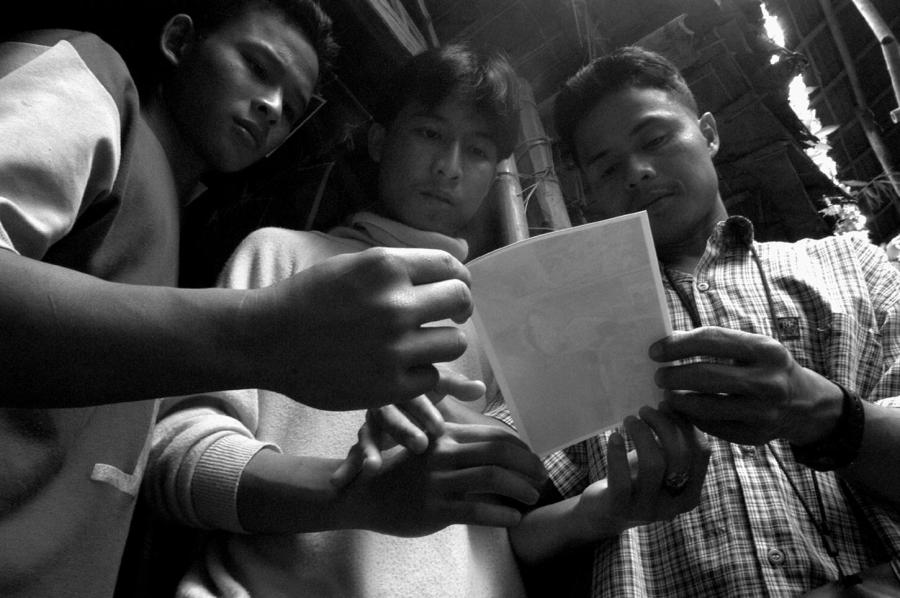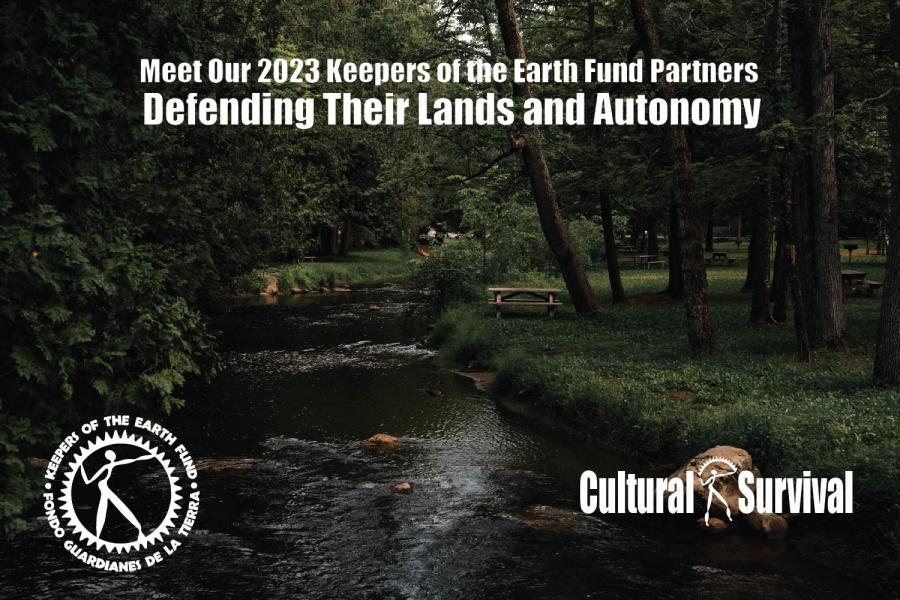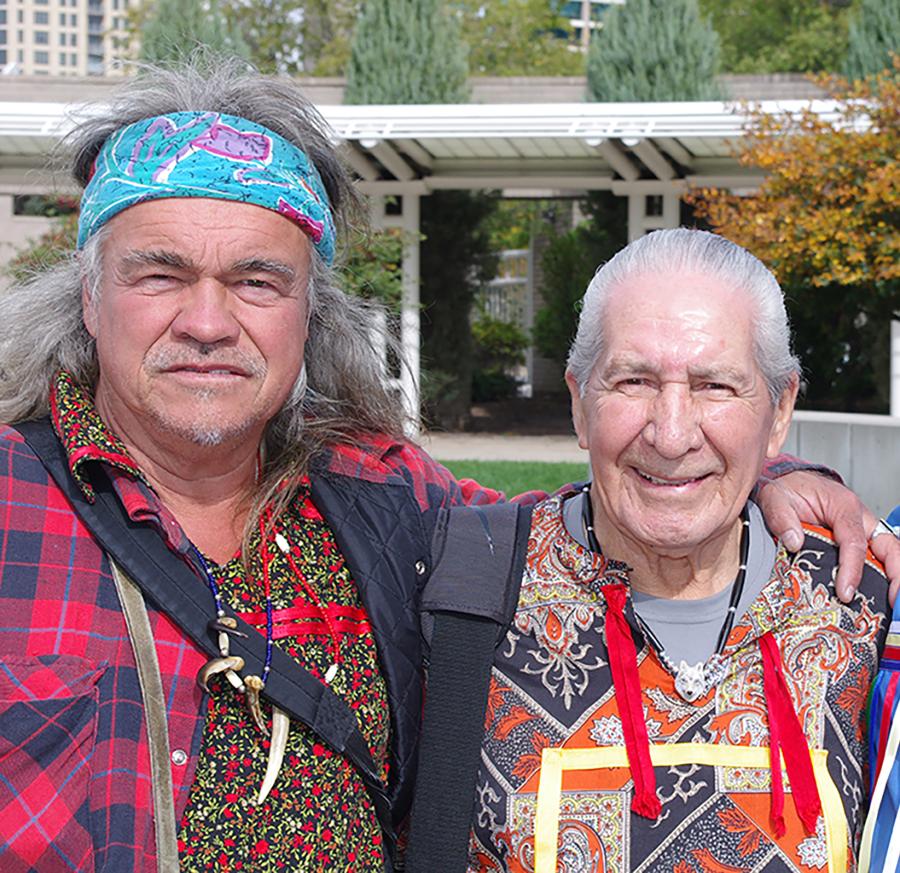Meeting once every decade, the World Parks Congress (WPC) is the largest gathering of parties interested in the future of protected areas. Ten years ago this gathering set a target of doubling the land area of Earth covered by protected areas to 10 percent. That goal has been surpassed, and today 12 percent of the Earth’s land surface is designated a protected area.
“Benefits Beyond Boundaries,” the Fifth World Parks Congress, which met in September 2003 in Durban, South Africa, and had 3,000 participants, set even more ambitious targets to establish a global system of protected areas, encompassing all ecosystem types and significantly expanding marine protected areas. To improve their effectiveness, these protected areas would be linked with broader landscapes and seascapes through corridors and other measures.
By harnessing protected areas to meet the U.N. goals of poverty eradication and sustainable development, the WPC acknowledged people at the heart of the conservation project, and included among its goals respect and recognition for the rights of indigenous peoples and local communities.
Indigenous participants at the WPC stressed care for Mother Earth as the long-term value to be nurtured rather than the designation of isolated islands of protected areas.
Indigenous peoples’ territories are embedded in ecosystems such as forests, drylands, icelands, wetlands, and seascapes. To be healthy, these ecosystems must be imbued with both cultural and natural values. Thus, security of tenure and recognition of culturally adapted land uses by indigenous peoples is tremendously important. In this regard, respect, promotion, and protection of indigenous peoples’ rights to their territories, lands, and resources was underlined by the WPC as a prerequisite to protecting the Earth and all types of protected areas.
This acceptance by the conservation community of the need to respect indigenous peoples’ rights in existing and future protected areas was a major achievement at the Durban conference.[1] Another significant outcome was the recognition of indigenous- and community-conserved areas as an additional type of protected area within existing World Conservation Union (IUCN) categories of protected areas.
The congress outcomes are not binding, the WPC being a meeting of concerned individuals without any authoritative power. Nevertheless, the WPC outcomes provide a broad conceptual framework for action by the conservation community to be implemented through more formal political and organizational channels. Its message to the Convention on Biological Diversity (CBD) was written to influence the decisions of that legally binding convention, which will discuss protected areas at the Seventh Conference of Parties (COP7) in Malaysia in March 2004. The Durban Action Plan, one WPC outcome, has targets and actions for adoption next November at the IUCN General Assembly.
The WPC’s significance for indigenous peoples lies in its ideological tone. Calling its results a “new paradigm” for conservation, the congress has given a bold mandate to address past, present, and future problems relating to protected areas and indigenous peoples. While “old style” conservationists lamented the congress’s “politicization” by indigenous peoples, the WPC as a whole agreed to respond to the historical grievances and harm caused by protected areas toward indigenous peoples, a commitment to respect indigenous peoples and local communities’ rights in the establishment and management of new protected areas, and an embracing of indigenous peoples’ conservation areas and community-conserved areas as important contributions to the conservation and renewal of nature.
The Political Test
These bold directions set by the WPC met their political test during the Ninth Meeting of the Subsidiary Body for Scientific, Technical and Technological Advice (SBSTTA) of the CBD. The preparatory work for the COP7 took place at SBSTTA, which addressed a full agenda, including protected areas. Addressing protected areas is central to meeting the objectives of the CBD and will be a major agenda item during COP7.
A major gain at SBSTTA was the inclusion of a program element on governance, participation, equity, and benefit-sharing in the Draft Work Programme on Protected Areas that covers indigenous peoples rights. Actions under this element will be more fully discussed and negotiated at COP7.
If the SBSTTA meeting is a barometer of what to expect, then indigenous peoples will have an important and difficult battle in Malaysia at the COP7. The Draft Decision on Protected Areas, including a fully bracketed paragraph on indigenous peoples, states that the SBSTTA “Recalls the obligations of Parties towards indigenous and local communities in accordance with Article 8(j) of the Convention and [national legislation] and notes that the establishment and management of protected areas requires particular attention. [Respect for land tenure, prior informed consent and indigenous territorial rights, where applicable, are critical in this regard].”
In the final plenary session, indigenous participants stated that in its current form, the language was unacceptable to indigenous peoples because it made no committment to recognizing indigenous peoples’ rights. Thus, the strength of the Work Programme is potentially undermined by a weak decision on indigenous peoples’ rights.
Given the inter-governmental nature of global negotiations on trade, the environment and sustainable development, and human rights, these international policy processes are important arenas for indigenous peoples to turn broad aspirations and demands into international and national policy.
Economic Challenges
At the heart of the ecological crisis is the subordination of social and ecological values to the market, and this imbalance is institutionalized in unequal decision-making powers in international negotiations between the rich and poor, between the North and South, between states and civil society, and between private sector interests and the public interest.
After the 1992 U.N. Conference on Environment and Development in Rio de Janeiro, Brazil, indigenous peoples warned about the dangers of keeping this global economic system unchanged while proclaiming a new paradigm of “sustainable development” and environmental protection in the various Rio agreements. The assertion, incorporated into the Rio agreements, of “national sovereignty” over biological resources, has proven to be a powerful tool used by Southern states against the unequal and overwhelming power of Northern states and their transnational corporations to address inequity in environmental governance that has occurred under conditions of contemporary “globalization.” However, this assertion is in danger of promoting state eminent domain over the territories of indigenous peoples and common property resources of local communities. Southern governments, together and as various regional blocs, often negotiate to level the playing field between the North and the South on the basis of indigenous and local community rights. But the Southern governments fail to adopt measures that will strengthen the rights and welfare of indigenous peoples and local communities. They instead leave these issues to national legislation and perpetuate governance by government over the people, rather than more inclusive and participatory governance approaches that empower other actors to be part of decision-making.[2] Governments must adopt new policy approaches that allow harmonization of their environmental and other international obligations with respect for indigenous peoples’ and local communities’ rights.
Technology Transfer
When addressing technology transfer, governments differentiated North-South technology transfer from South-South technology transfer, and recognized that technology transfer between the North and South involving indigenous knowledge requires distinct and appropriate policies. Such differentiation could be applied more broadly by the CBD parties by further elaborating CBD provisions pertaining to indigenous peoples. As Southern states use sovereignty as a tool in their negotiations vis-à-vis Northern states on issues such as access to biological resources and intellectual property rights, they must not use the same tool to undermine indigenous peoples’ rights. Empowerment and enabling measures must allow indigenous peoples and local communities, as rights-holders, to play a role in the implementation of the CBD. Interestingly, the world’s most industrialized states with significant presences of indigenous peoples—the United States, Canada, Australia, and U.K.-supported New Zealand—are among the most active in weakening indigenous rights at the CBD. A united front of indigenous peoples from all global regions must overcome these obstacles by uniting with the numerous Southern states that are prepared to take a progressive interpretation of the CBD and include protection and promotion of indigenous peoples’ rights in its decisions.
Ecosystem Approach
This progressive approach is fully consistent with the “ecosystem approach” principles that were adopted by the CBD in 2001. This approach acknowledges that decision-making and management of biodiversity are best carried out using the institutions and governance mechanisms most suited to the ecosystem, including recognizing the central role of indigenous peoples. The first principle of the ecosystem approach states: The objectives of management of land, water and living resources are a matter of societal choice. … Different sectors of society view ecosystems in terms of their own economic, cultural and societal needs. Indigenous peoples and other local communities living on the land are important stakeholders and their rights and interests should be recognized. Both cultural and biological diversity are central components of the ecosystem approach, and management should take this into account. Societal choices should be expressed as clearly as possible. Ecosystems should be managed for their intrinsic values and for the tangible or intangible benefits for humans, in a fair and equitable way.
Institutional Challenges
The General Assembly of the IUCN poses a different set of challenges for indigenous peoples. As the leading international conservation organization, its actions, together with its members around the world, will largely determine the implementation of the WPC outcomes. Few indigenous peoples’ organizations are members of the IUCN, thus indigenous peoples will not be part of the formal decision-making at the IUCN’s Fourth World Conservation Congress in Thailand in October. But the case can be made that indigenous peoples are de facto effective conservation units who can apply for membership in the IUCN and the right to participate in the deliberation of conservation policy. This arrangement has been reached in the United Nations through the U.N. Working Group on Indigenous Populations and the U.N. Permanent Forum on Indigenous Issues, which have a mandate to elaborate the rights of indigenous peoples and broader indigenous issues. A similar thought process has also guided the CBD in its Working Group on Article 8j, which refers specifically to indigenous peoples, and related provisions. The right to participate in the deliberation of policy allows effective indigenous peoples’ participation in organizations such as the Unted Nations, the CBD, and non-governmental organizations. The IUCN General Assembly must also establish mechanisms for the meaningful and effective participation of indigenous peoples in policy-making and implementation.
At stake at the IUCN General Assembly will be implementation of the following action targets from Durban:
• All existing and future protected areas shall be managed and established in full compliance with the rights of indigenous peoples, mobile peoples, and local communities.
• Protected areas shall have representatives chosen by indigenous peoples and local communities in their management proportionate to their rights and interests
• Participatory mechanisms for the restitution of indigenous peoples’ traditional lands and territories that were incorporated in protected areas without their free and informed consent shall be established and implemented by 2010.
Many measures were proposed to achieve these targets, the most notable being:
• The IUCN and its members accept the indigenous delegates’ proposal for the establishment of a Truth and Reconciliation Commission on Indigenous Peoples and Protected Areas to investigate and redress past mistakes
• The World Bank and its Global Environment Facility ensure that their revised policy on indigenous peoples is fully consistent with indigenous peoples’ rights
• Governments approve the U.N. Draft Declaration on the Rights of Indigenous Peoples and ratify ILO Convention 169; recognize the rights of indigenous peoples to their lands, territories, and natural resources; and review their conservation laws and policies to ensure indigenous peoples’ effective involvement and participation
• Protected areas authorities adopt measures, policies, and practices that provide for the recognition of and respect for the rights of indigenous peoples; adopt mechanisms to involve indigenous peoples fully in the designation and management of protected areas; and promote community-conserved areas with their free, prior, and informed consent. A raft of specific measures were also accepted to ensure that the rights and interests of mobile indigenous peoples are properly accommodated. The Durban Accord that came out of the WPC meeting calls on the IUCN to “provide advice on reforming national laws, policies and conservation programmes to respect indigenous peoples’ and local communities’ rights,” “strengthen training of local authorities” on the rights of indigenous peoples, and conduct an implementation review of prior IUCN policies on indigenous peoples.
Just as the CBD Work Programmes will need to be written into CBD National Biodiversity Strategies and Action Plans to be effectively implemented, the Durban Action Plan will require implementation through the IUCN and its members, which include governments, protected area authorities, conservation organizations, and other conservation-related bodies. On the ground, these are the institutions most likely to be in charge and influential in the management and establishment of protected areas. Their plans and decisions will shape the futures of protected areas and their impacts on indigenous peoples.
Genuine Partnerships
The recognition by the conservation community that indigenous peoples’ rights must be respected in all protected areas is a sound starting point for building concrete partnerships between indigenous peoples and conservation bodies, allowing for a more equitable relationship.
Whereas some conservation organizations like World Wide Fund for Nature-International (WWF) adopted their policies on indigenous peoples in the mid-1990s, others like Conservation International have only recently adopted a clear organizational policy, which is still in draft form. A major test of the application of these policies post-Durban will be the programs adopted during the IUCN General Assembly, as well as in each protected area under the influence of each IUCN member.
What will effective partnerships between indigenous peoples and conservation bodies look like? Respect for the principle of free, prior, and informed consent of indigenous peoples to protected areas will be a core defining principle. By giving due attention to the procedural and substantive elements of prior informed consent, indigenous peoples and potential partners can negotiate agreements on the various issues surrounding protected areas on the basis of mutual respect and mutual benefit.
In broad terms, there could be protected areas under the jurisdiction of central government, local governments, and indigenous peoples’ authorities. In all areas there could be co-management with indigenous peoples, if so desired by the various parties, proportionate to the level of overlap with indigenous lands and the presence of indigenous communities. Exactly how this would be applied in existing and proposed protected areas will be a matter for negotiated agreements between the affected peoples and the protected area proponents. A review of case studies and experiences relevant to indigenous peoples and conservation around the world reveal valuable lessons in this respect. The increasing number of territories under indigenous jurisdiction in Latin America, the Philippines, North America, and other parts of the globe are living examples.
Few conservation organizations have adopted respect for the free, prior, and informed consent of indigenous peoples as part of their organizational policies. The IUCN could serve a useful function in further elaborating this principle as applied to protected areas, together with indigenous peoples, and consistent with parallel processes in the United Nations.
WPC acceptance of restitution of lands declared as protected areas without indigenous peoples’ prior informed consent could potentially restore sustainable relationships between lands and peoples pre-dating expropriation, and provide an opportunity to address the social and environmental problems arising from past mistakes.
Beyond protected areas, there will also be indigenous territories not formally designated as protected areas, but which, in practice, are effective areas of sustainable use and conservation.
An outstanding problem identified by indigenous peoples is the licensing of extractive industries in protected areas. Extractive industries want the freedom to mine and extract mineral and energy resources wherever these are found, including protected areas. The International Council on Minerals and Metals (ICMM) and IUCN have embarked on a dialogue on mining and biodiversity. This dialogue does not enjoy universal support within the IUCN’s membership and was a controversial issue during the World Parks Congress. The final resolution adopted on this topic importantly underscored the need to address indigenous peoples’ values in the dialogue with mining corporations.[4]
The Private Sector
In the drive to expand protected areas and win additional supporters, the private sector is an interested party and potential partner for conservation. Ecotourism and private game reserves and parks were seen as expanding services in the future. Partnerships for biodiversity protection and “green branding” have been projected as financial sources for conservation, but are also potential trade-offs to indigenous peoples’ rights.
Recognition of and adherence to indigenous peoples’ right to prior informed consent should extend to these commercial developments, and should work toward the broader application of indigenous peoples’ rights.
Securing the rights of indigenous peoples in decision-making about our territories and futures will have far-reaching impacts on conservation and sustainable development. Thus, indigenous peoples’ engagement and active participation in international policy processes such as the WPC, the CBD, and the IUCN are assertions of the possibility of alternatives, and the positive contribution of diverse voices in global governance. By giving a place to indigenous peoples and local communities at the negotiating table, the power imbalance that underlies today’s social and ecological crisis is somewhat redressed. This advance paves the way toward concrete cooperation by all parties in all the critical ecosystems that require everyone’s care and protection.
1. See Durban Action Plan, Outcome 1 and 5, and Recommendations 5.13, Cultural and Spiritual Values of Protected Areas, and 5.24, Indigenous Peoples and Protected Areas.
2. In the CBD, state sovereignty over biological resources is set forth in Article 3, which reads: “States have, in accordance with the Charter of the United Nations and the principles of international law, the sovereign right to exploit their own resources pursuant to their own environmental policies.” This language does not, however, preclude attention to and respect for indigenous peoples’ internationally guaranteed rights. See The Convention on Biological Diversity, State Sovereignty and Indigenous Peoples’ Rights. Legal Briefing 1, November 2001.
Joji Carino is Ibaloi-Igarot from the cordillera region of the Phillippines and is director of the European office of the Philippines-based Tebtebba Foundation—The Indigenous Peoples’ International Centre for Policy Research and Education.



